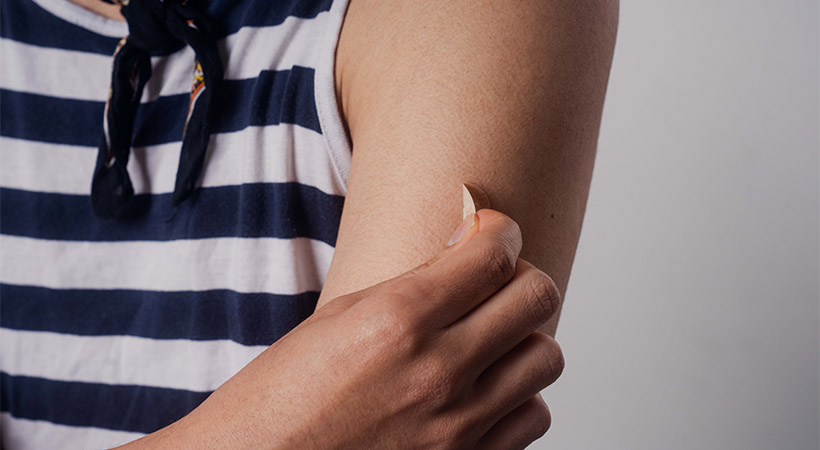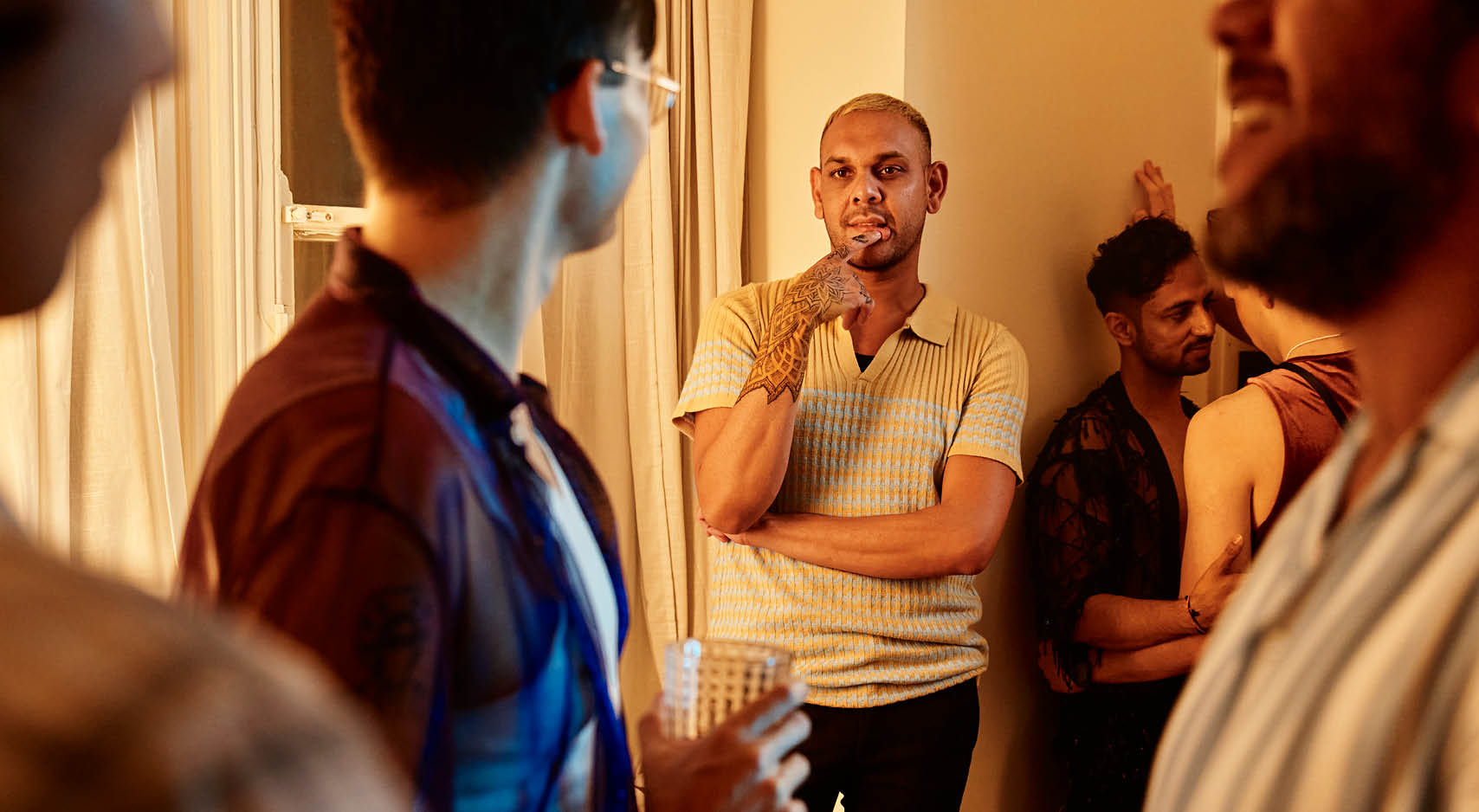Mpox (formerly known as monkeypox) was a hot minute in 2022 — and it’s back, back, back again. Cases are rising around Australia. Vaccinating is the best way to help prevent mpox and reduce the chance of severe symptoms. If you’ve seen what having the virus can be like, there’s a strong case for avoiding it. Here’s how.
Nobody wants to imagine the worst happening. But that’s what we get insurance for. Thanks to 2 doses of vaccine, thousands of guys across Australia already have the best insurance against getting mpox and avoiding severe symptoms.
However, community transmission is still happening in Australia — now’s the time to vaccinate! Reaching full protection takes at least 6 weeks, so vaccinate now before your party season starts.
Ready to find your nearest mpox vaccination location? Head over to our interactive map.
For a simple update on rising case numbers, mpox symptoms, transmission and prevention, check out What is mpox, and what does it mean for guys in Australia?
In this article:
Key points
- A free, safe and effective mpox vaccine is available now — no Medicare required
- Vaccinating is the best way to help prevent mpox and reduce the chance of severe symptoms
- 2 doses of mpox vaccine provide higher protection than 1 dose
- You can still get your 2nd dose now even if your 1st dose was more than 12 months ago
- Now is the time to vaccinate — ahead of travel and party events and as soon as possible
About the mpox vaccine
Free, safe and effective mpox vaccines (JYNNEOS®) are available to eligible people — no Medicare required. The vaccine is suitable for people living with HIV and those with weakened immune systems.
Vaccinating can help prevent you from getting mpox and reduces the chance of experiencing severe symptoms. Mpox symptoms are often more severe in unvaccinated people.
“Free, safe and effective mpox vaccines are available to eligible people — no Medicare required.”
One dose of vaccine provides short-term mpox protection. It takes 2 weeks after your first dose to take effect. You must wait 28 days (4 weeks) after your first dose before getting your second dose. Maximum protection occurs around 2 weeks after your second dose.
Two doses of mpox vaccine provide higher protection for some years compared to one dose. Booster doses are not currently recommended for people who have already had 2 doses.
If you received your first dose of vaccine more than 12 months ago, you can still receive your second dose now. You do not need to restart the vaccination process.
The vaccine is most effective when you get it before exposure to mpox. But if you’re a close contact of someone with mpox, act fast — vaccinating within 4 days provides your best chance to avoid symptoms. Vaccinating between 4 and 14 days after exposure may help lessen the severity of any symptoms.
Who can get the mpox vaccine?
The Australian Technical Advisory Group on Immunisation (ATAGI) provides national clinical guidance on vaccination against mpox. Vaccinations are recommended for:
- All cisgender and transgender gay, bi+ and other men who have sex with men, particularly:
- Guys who have multiple sexual partners, have group sex or attend saunas or other sex venues
- Guys living with HIV
- Guys planning interstate or international travel
- People who have sex with gay or bi+ men (including cis or trans women or non-binary people)
- Anyone who has been a close contact of someone with mpox in the past 14 days
- Sex workers who work with gay, bisexual or other men who have sex with men
For anyone who has received a smallpox vaccine more than ten years ago, one booster dose of mpox vaccine is recommended.
States and territories are responsible for rolling out the vaccine to local communities. Eligibility criteria may vary between jurisdictions. Click on your state or territory to find out more: ACT | NSW | NT | QLD | SA | TAS | VIC | WA
For more about mpox vaccines, visit the Australian Government Department of Health website.

Where can I get the mpox vaccine?
Mpox vaccines are available at sexual health centres and some doctors and health services. Find your nearest mpox vaccination location using our interactive map.
Our map also shows nearby HIV and STI testing services, rapid HIV testing services, and peer-run testing services operated by other gay and bi+ guys. If it’s been more than three months since you last tested, book in for a sexual health check-up while you’re getting your mpox shot.
“2 doses of mpox vaccine provide higher protection than 1 dose”
Find local information about getting a mpox vaccine from LGBTQ health organisations and government websites in your state or territory:
How much does the mpox vaccine cost?
Mpox vaccines are free to all eligible people in Australia — no Medicare is required. If you do have Medicare, bring your Medicare card to your appointment.
Some mpox vaccination locations may charge an appointment fee — check with the service before attending.
Are there mpox vaccine side effects?
As with most vaccinations, there’s a chance you might experience some redness, swelling or itching at the injection site. If you do experience these, they’re typically mild, easily tolerated and don’t last long. Some people also report short-lived muscle aches, a headache or fatigue after vaccination. Talk to your doctor if you’re concerned.
I’ve had 1 dose of mpox vaccine. Do I need a 2nd dose?
People who received the first dose more than 28 days ago are recommended to receive their second dose as soon as possible to maximise protection.
One dose of mpox vaccine provides some protection in the short term. Getting a second dose significantly reduces your chances of getting mpox and reduces the severity of any symptoms.
If you are living with HIV
People living with HIV who use effective HIV treatment are at no greater risk of mpox than HIV-negative people. However, people living with HIV who are not on effective HIV treatment and have weakened immune systems may experience more severe or prolonged mpox symptoms.
Although there is limited evidence on mpox in HIV-positive people, people living with HIV are advised to follow the same advice as the general population. Contact your HIV treatment specialist or local HIV organisation if you have any concerns.

How is the mpox vaccine administered?
There are two approved ways to administer the JYNNEOS® vaccine. Both provide the same level of protection against mpox:
- Subcutaneous injection delivers the vaccine beneath, or under, all the layers of the skin
- Intradermal injection delivers the vaccine into the outer layers of the skin
Both injection methods are suitable for most people. However, the intradermal injection method is not recommended for people with weakened immune systems, people with a history of keloid scarring, or those seeking vaccination after being a close contact of someone with mpox. Intradermal injections were used to extend the limited supply of vaccines in 2022, but subcutaneous injections are more typical in 2024.
You can receive both doses by the same injection method or different ones. For example, if you received one dose of vaccine by intradermal injection, you can receive your second dose by subcutaneous injection.